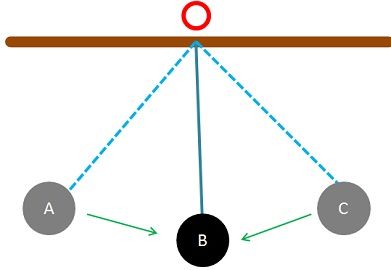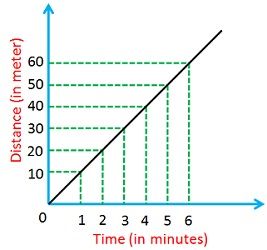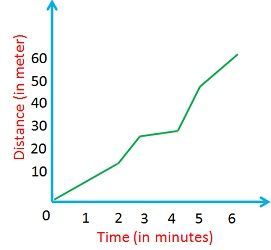 The basic difference between uniform and non-uniform motion is that the former represents the motion in which the moving body covers the same distance in the same time, but in the case of latter, the body travels unequal distances at the same time.
The basic difference between uniform and non-uniform motion is that the former represents the motion in which the moving body covers the same distance in the same time, but in the case of latter, the body travels unequal distances at the same time.
There are millions of objects surrounding us, some of them stay at rest while others are in motion. In our day to day life, you have noticed the motion of different living and non-living things that are on the move like birds, fishes, cars, buses, trains etc. A body is believed to be in motion when there is a change in its position with respect to time. It can be of two types, i.e. uniform motion and non-uniform motion.
Content: Uniform Motion Vs Non-uniform Motion
Comparison Chart
| Basis for Comparison | Uniform Motion | Non-uniform Motion |
|---|---|---|
| Meaning | Uniform motion implies the movement of a body along a straight line with steady speed. | Non-uniform motion alludes to the movement of an object along a straight line with variable speed. |
| Distance | Covers equal distances in equal time interval. | Covers unequal distances in equal time interval. |
| Average speed | Is similar to actual speed of the object. | Is different from actual speed of the object. |
| Graph | Distance-time graph shows a straight line | Distance-time graph shows a curved line |
| Rectilinear motion | Zero acceleration | Non-zero acceleration |
Definition of Uniform Motion
In Physics, uniform motion is described as the motion, wherein the velocity (i.e. speed and direction) of the body travelling in a straight line remains constant. When the distance travelled by a moving object, is same at various time intervals, irrespective of the time length, the motion is said to be uniform motion.
 With the graph given above, it is indicated that there is a displacement of 10 meters in every minute, as there a constant velocity with respect to time.
With the graph given above, it is indicated that there is a displacement of 10 meters in every minute, as there a constant velocity with respect to time.
Examples
- Movement of hands of a watch.
- Rotation and revolution of the earth.
- Movement of blades of a ceiling fan.
Definition of Non-uniform Motion
Non-uniform motion is used to mean the movement in which the object does not cover same distances in equal time intervals, irrespective of the length of the time intervals. Each time when the velocity of the moving object changes by a different rate, in at same time interval, the motion of the body is perceived as non-uniform motion. In practical life, most of the motions around us are non-uniform motion.
 The graph given above explains that the rate of displacement of the object differs in every minute, as the velocity increases or decreases with respect to time.
The graph given above explains that the rate of displacement of the object differs in every minute, as the velocity increases or decreases with respect to time.
Example
- Oscillation of pendulum.
- The motion of a train.
- A racer is running in a race.
- A person jogging in a park.
Key Differences Between Uniform and Non-uniform Motion
The difference between uniform and non-uniform motion can be drawn clearly on the following grounds:
- When an object moves along a straight line with a firm speed, the motion is said to be uniform motion. Unlike, non-uniform motion, wherein the object travels along a straight line with a variable speed.
- The object in a uniform motion covers same distances in an equal time period. Conversely, objects in a non-uniform motion cover dissimilar distances in an equal time period.
- The speed of the object travelling in uniform motion is constant, i.e. the actual speed and the average speed of the moving body is same. On the other hand, the speed of the body moving in non-uniform motion varies meter by meter or kilometre by kilometre, i.e. the average speed is not equal to the average speed of the object.
- For an object moving in uniform motion, the distance time graph shows a straight line. On the contrary, For an object moving in non-uniform motion, the distance time graph shows a curved line.
- Object involving uniform rectilinear motion, the acceleration is zero, whereas the same is non-zero if the object involves non-uniform rectilinear motion.
Conclusion
Different object covers the same distance in different time amounts, i.e. the fast objects cover the given distance in less time while the slow ones take the longer time to travel. Thus, it is the rate of movement of the object that plays a significant role.
By and large, the difference between uniform and non-uniform motion relies on, whether the velocity of the moving body is changing or not. If the velocity of the object sticks to a particular rate, then the motion is uniform, but if it increases or decreases at different points of time, then this movement is called as non-uniform motion.






Aanya Khurana says
Thank you, the differences enlisted have made my conceptual understanding of motion thorough.. Regards
Vinod Kumar Madhukar says
Thanks for this difference 👌👌👌👍👍😃😃😃
Kashish says
Very nice difference